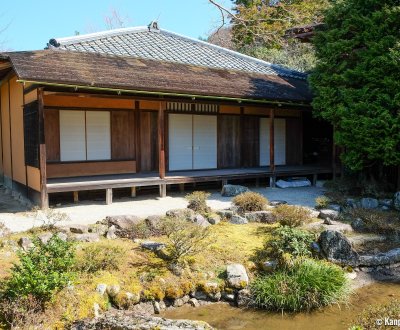Traditional Japanese Architecture
A Millennia-old Heritage
Traditional Japanese architecture is characterized by an extensive use of wood, for every kind of construction:
- Traditional house, in the countryside (minka) or in the city (machiya),
- Temples and shrines,
- Imperial and aristocratic residences,
- Castles, even the fortified ones,
- Tea pavilions.
Various styles have been developed over time to respond to several types of use, weather conditions varying according to the areas (typhoons, snowfalls, etc.) and to the frequent earthquakes.
Characteristic features constitute the traditional Japanese architecture, such as:
- Posts and beams structure,
- Fusuma sliding doors inside and shoji outside,
- Tatami floor,
- Translucent rice paper used to cover openings,
- A large roof able to withstand weathering and protect from the sun.
The roof can be covered with tiles, thatch or tree bark. Constructions are often built on stilts, slightly raised from the ground. An intermediary space, called engawa, that looks like an elevated outdoor corridor, makes the transition between the inside and the garden. All old houses have a genkan, a small lobby where people take off their shoes before "going up" in the actual rooms.
Many traditional architecture buildings are also enlisted in the UNESCO World Heritage.
Until the end of the 19th century, the carpenter (daiku 大工) was the main artisan responsible for construction works.

